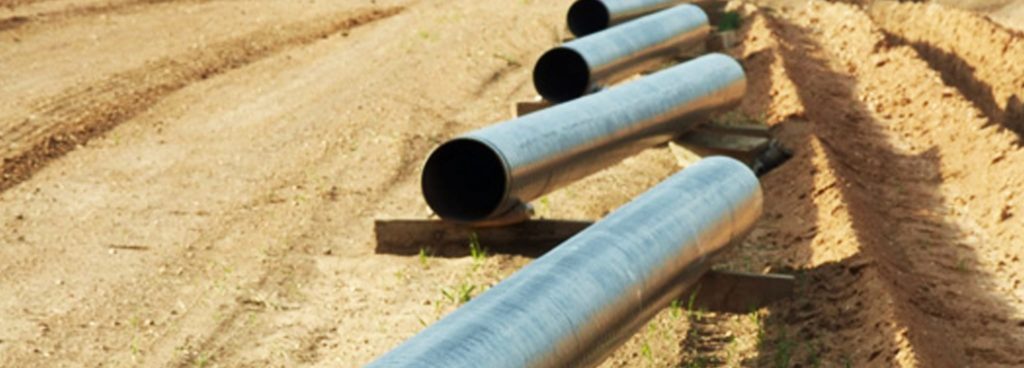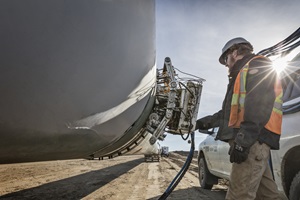Pipeline Welding Inspection: Ensuring Safety And Security and Top Quality in Every Weld
Pipeline Welding Inspection: Ensuring Safety And Security and Top Quality in Every Weld
Blog Article

Best Practices for Pipe Welding Examination: Strategies, Criteria, and Procedures to Attain Top Quality Guarantee and Compliance
Reliable pipeline welding assessment is crucial for guaranteeing the honesty and safety and security of essential facilities. Understanding the intricacies entailed in each stage of examination is essential to achieving compliance and integrity in pipeline systems.
Value of Welding Examination
The honesty of bonded joints is extremely important in ensuring the safety and reliability of pipe systems. Appropriate welding methods and extensive inspection procedures are important to stop failures that can bring about devastating incidents, environmental damages, and loss of life. Pipeline Welding Inspection. Welding assessment works as a safety net, recognizing problems such as fractures, porosity, and incomplete blend before they escalate right into significant concerns
In addition, pipe systems frequently operate under high stress and severe conditions, making the top quality of welds even more important. Governing conformity is an additional significant aspect, as various requirements dictate the high quality assurance procedures that should be stuck to in pipe construction and upkeep. Failing to comply can result in legal ramifications and monetary losses.

The role of welding evaluation expands past simple verification of craftsmanship; it encompasses the assurance of long-term operational integrity. This entails a methodical method that consists of not only visual inspections however likewise progressed non-destructive testing methods. Eventually, reliable welding assessment is a financial investment in the durability and security of pipeline systems, guaranteeing they operate as intended while lessening dangers connected with product shortages.
Key Inspection Methods

Visual evaluation, usually the very first line of protection, permits the identification of surface area problems such as fractures, undercuts, and porosity. Ultrasonic testing employs high-frequency audio waves to spot interior defects, supplying a thorough assessment of weld honesty. This non-destructive technique is specifically efficient for identifying interruptions that may not show up externally.
Radiographic testing involves using X-rays or gamma rays to generate photos of the welded joint, exposing internal problems. This method offers thorough understandings yet may require specific tools and safety factors to consider. Finally, magnetic bit screening works for spotting surface and near-surface stoppages in ferromagnetic products, using magnetic fields and great iron bits.
Sector Specifications and Rules
Conformity with sector standards and laws is important for ensuring the top quality and security of pipe welding inspections. These requirements supply a structure for finest methods in welding processes, materials, and evaluation strategies, permitting companies to reduce flaws and improve the integrity of pipe systems. Trick bodies such as the American Culture of Mechanical Designers (ASME), the American Welding Culture (AWS), and the International Company for Standardization (ISO) collection forth standards that are widely recognized and taken on within the industry.
In the USA, laws from the Pipeline and Hazardous Materials Safety And Security Administration (PHMSA) govern the security of pipeline procedures, mandating rigorous evaluation protocols. These requirements not only serve to protect public security and the environment but additionally guarantee compliance with legal and contractual commitments. Adherence to the pertinent codes, such as ASME B31.3 for procedure piping, is essential for preserving functional performance and regulative conformity.
Additionally, constant updates and modifications to these requirements mirror technical developments and developing market techniques, emphasizing the requirement for organizations to stay informed and train employees accordingly. Ultimately, durable conformity with well established standards fosters trust and dependability in pipeline facilities, securing why not check here both stakeholders and possessions.
Efficient Examination Procedures
Reliable assessment procedures are critical for determining possible flaws in pipe welds and guaranteeing the general honesty of the system. A systematic approach to evaluation incorporates several key stages, consisting of pre-weld, in-process, and post-weld inspections. Each phase plays a crucial role in keeping quality control.
Throughout pre-weld examination, it is vital to examine the products and joint arrangements, making sure conformity with task requirements. In-process inspections involve checking welding methods and specifications, such as warm input and travel rate, to avoid problems from occurring. This phase enables real-time changes to welding methods.
Post-weld inspections include non-destructive screening (NDT) methods like radiography, ultrasonic screening, and magnetic fragment testing. These methods help find interior and surface area flaws that might jeopardize the pipeline's capability. Documentation of all assessment activities is extremely important, supplying a deducible record that supports conformity with market criteria.
Educating and qualification of inspection personnel further enhance the efficiency of these treatments. By sticking see this to an organized evaluation method, organizations can reduce threats, guarantee conformity, and inevitably supply pipelines that satisfy rigid safety and performance needs.
Common Obstacles and Solutions
Pipeline welding assessment offers a number of common obstacles that can influence the top quality and safety of the end product. One considerable difficulty is the irregularity in welding techniques and materials, which can lead to inconsistent weld quality. To address this, it is critical to establish standardized procedures and training for welders, making certain an uniform strategy across jobs.

Ecological factors, including temperature and humidity, can likewise impact the welding procedure, possibly causing splits or incomplete blend. Carrying out controlled settings and adhering to pre-weld treatments can alleviate these threats.
Final Thought
To conclude, the implementation of ideal methods for pipeline welding evaluation is important for ensuring quality control and compliance with sector criteria. An extensive technique, incorporating numerous methods such as aesthetic, ultrasonic, and radiographic screening, facilitates the identification of problems throughout all phases of the welding procedure. Pipeline Welding Inspection. Adherence to established guidelines and reliable evaluation procedures not only improves the imp source integrity and safety of pipe systems however likewise alleviates risks connected with welding problems, consequently promoting general functional integrity
Conformity with market criteria and regulations is important for ensuring the high quality and safety of pipeline welding evaluations. These standards give a structure for ideal methods in welding procedures, materials, and inspection methods, enabling organizations to minimize issues and boost the integrity of pipe systems.In the United States, laws from the Pipeline and Hazardous Materials Security Management (PHMSA) regulate the security of pipeline operations, mandating rigorous inspection procedures. An organized method to assessment incorporates several key phases, consisting of pre-weld, in-process, and post-weld evaluations.In conclusion, the application of best techniques for pipeline welding assessment is important for making sure top quality assurance and conformity with market requirements.
Report this page